#American Silkworm Moth
Explore tagged Tumblr posts
Photo
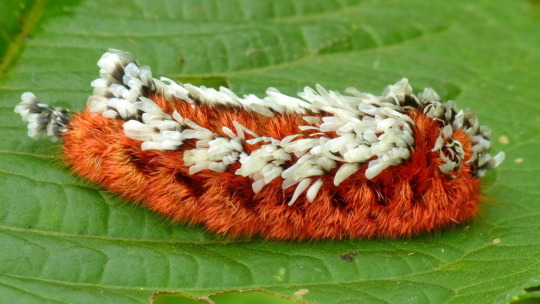
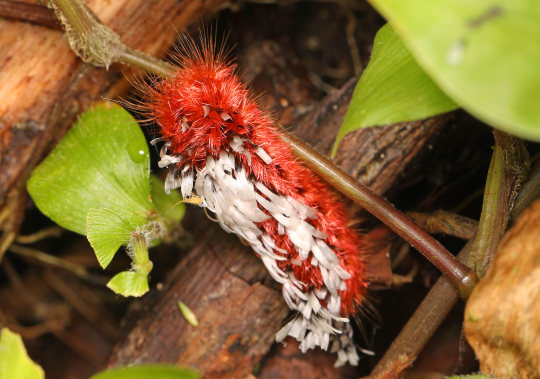
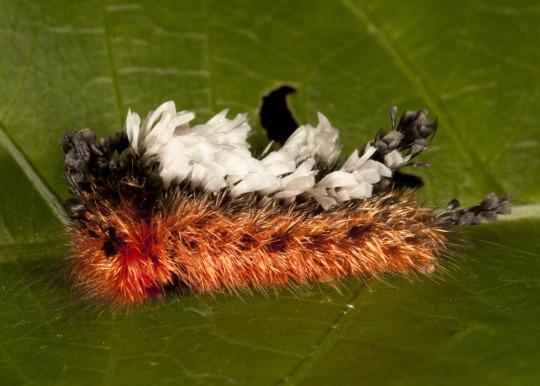


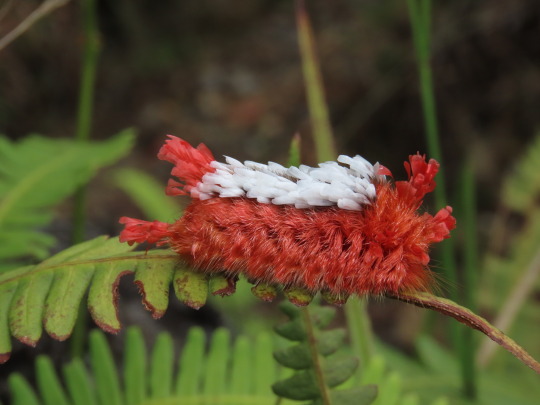
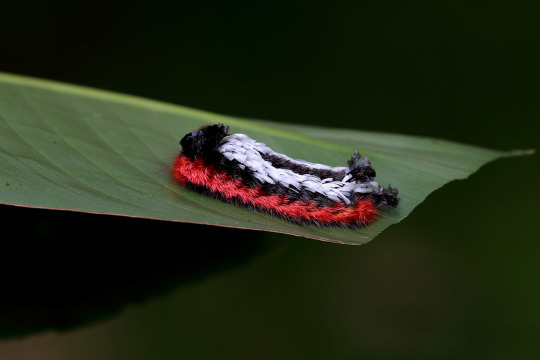

Shag carpet caterpillar moth, Prothysana felderi, Apatelodinae (American silkworm moths)
Found from very southern Mexico down through Peru
Photo 1 by Andreas Kay, 2 by Judy Gallagher, 3-4 by kkrockytop, 5 by desertnaturalist, 6 by indianacristo, 7 by erlandreflingnielsen, and 8 by kkrockytop
#animals#curators on tumblr#insects#bugs#moth#caterpillar#larva#american silkworm moth#Apatelodinae#shag carpet caterpillar#shag carpet caterpillar moth#one nice bug
671 notes
·
View notes
Photo

#LunaMoth
For the second time, I just found a rare Luna Moth last night, at 11:43pm when I got home, right under my porch waiting to get photographed.
Am I very lucky or what?

#LunaMoth
Beautiful Extremely Rare Nocturnal Endangered Luna Moth. Also called the American Moon Moth. Apparently If you have seen one of these live Luna Moths, you should consider yourself very lucky.
They are the largest of Moths in North America with a wingspan of 4.5 inches and can exceed 7.
#Luna Moth#Polyphemus Moth#Butterfly#Saturniidae Species#Nearctic Moth#American Moon Moth#Giant Silkworm Moth#North America nocturnal#Wildlife Need Protection#IUCN#International Union for Conservation of Nature#ECCC#Environment and Climate Change Canada#NCC#Nature Conservancy of Canada#Raw Nature#Nature Photography#Nature Canada#Wildlife Photography#Mountainous Parts of the Northern Hemisphere#Canada#The RavenKeeper
667 notes
·
View notes
Note
I'm sure you've covered the bug situation at some point, but just because I'm curious and to ask more specific questions: what are the biggest insects one could ostensibly find? Are any insects kept like bees (are there just bees)? Any sort of cultural significance involved with insects?
The bug situation is pretty much earthlike, you aren't going to be able to find any insects bigger than can be found in the cenozoic.
There ARE indeed just bees, they haven't been mentioned a lot since most of my posting is based around Whitecalf's setting and beekeeping isn't heavily practiced in Imperial Wardin (the Hill Tribes are the only people in the region that beekeep as a core cultural practice, and their migrant progenitors May have brought the region's first domesticated honeybees with them) but beekeeping is very widespread. Silkworms are also canon.
The kermes insect and cochineal is canon, and species of both can be found in Imperial Wardin (the cochineal here is closest to the armenian cochineal specifically). Both produce a high quality red dye, though smaller quantities of cochineal are required to make the same amount of dye. A cochineal more akin to the Central American species (feeds on cacti) is found west and south across the seaway, (including parts of Bur), and is the most valued of all (has the highest dye output).
Some of the purely invented kept insects include:
Caviar ants, which are a type of domesticated leafcutter that has been selected for multi-queen colonies and massive egg production. Their eggs and larvae are a STAPLE food in a lot of qilik societies- qilik are primarily carnivorous (specifically insectivorous) and can digest a limited range of plant matter- this is a form of mass agriculture that most readily and cheaply feeds large populations. Caelin and delkhin societies also utilize them (though tend to depend more heavily on large animal agriculture), and some human/elowey societies have adopted them (though virtually never as a staple food).
Silk-orchard spiders, which are a species of colonial spider that can be reared for mass silk production with a stable enough food source. This silk is much costlier to produce than that of silkworms, but MUCH stronger, and is used to make ultra-lightweight armor (it's not going to stop a direct stab of a blade in of itself, but can be highly viable when padded and reinforced).
King locusts, which are domesticated grasshoppers selected to be big (about the length of a human hand), fat, slow, and flightless, and reared as tiny livestock (mostly by qilik).
Two decorative arthropods that are used in the Cynozepal/Ch'Chen regions primarily, which are brooch beetles (a mix of selectively bred and wild-caught beetles worn live as jewelry) and jewel ticks (colorful ticks that rarely transmit diseases to non-mammalian hosts, intentionally allowed to latch as temporary decoration).
(This old post goes into most of these in further detail ft actual illustrations here [x])
---
I don't have Many specific culturally significant insects established but here's what I've got so far:
-One deity in the Burri pantheon is the god of beekeeping (as well as a minor agricultural deity).
-Insects are VERY significant to the Chit-Sut-Susit qilik culture. Most in this group have converted to the Cynozepali Cosmic Dualist religion and do not worship their original gods (the chief of which was strongly associated with butterflies) but retain practices of ancestor worship. One facet of this is believing that each person has two souls, one that remains earthbound after death to guide the living, and one that moves on to the afterlife. Earthbound souls of ancestors take the forms of moths and butterflies, and these animals have a protected and sacred status. Butterflies in particular are associated with masculine beauty (which is primarily being delicate and colorful) and the garb of Chit-Sut-Susit drakes often mimics butterfly patterns.
-The periodical cicada is a symbol of esoteric knowledge and enlightenment in the (pretty major) Eterhimhamdli religion, which is the dominant religious practice east of the Blackmane mountains across many cultural groups (and is a religious minority in Imperial Wardin, mostly brought by Yuroma migrants). This religion's core doctrine recognizes no deities and no individual soul (rather believes that personal experience is a facet of a collective consciousness/oversoul) and the primary goal of its priesthood is accessing hidden knowledge obtained by freeing the mind from the body (through meditation, trance, psychoactive drugs, and trepanation) to tap into the oversoul, and achieving enlightenment through completely freeing oneself of the body's illusions and attaining full experience of the oversoul. The cicada's cycle of 'sleeping' beneath the earth for years, then emerging as one in unison is used as an analogue for enlightenment and the return to the collective. (The Scholarly Order of the Root is a sect of this religion)
-Horseflies are admired by the Tho-Tykoso people (north of the Viper seaway, adjacently north of the central Royal Dain kingdoms). They are noted for being small yet difficult to kill due to their agility, and capable of inflicting great pain and wearing down much larger beasts. Their warrior culture is based mostly around mounted archery using small, nimble khait, and they seek to emulate these qualities. Horsefly symbols are common on khait tack and the clothing of warriors.
55 notes
·
View notes
Text
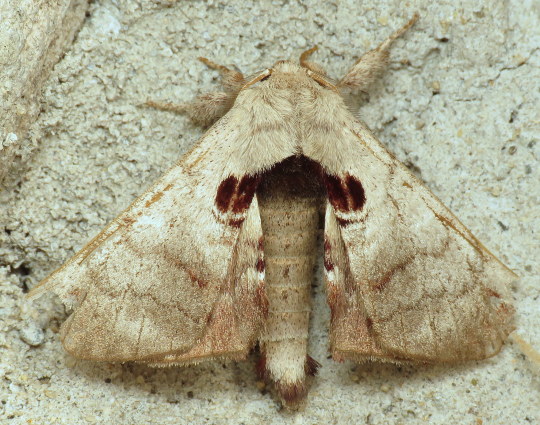
Bug of the Day
Was a weirdly quiet night at the lights the other night - hot all day, pre-storm, barometric pressure physically palpable, but then I found this big boi in a corner of my porch usually reserved for spiders (and things that the spiders have eaten). This is a spotted Apatelodes moth, Apatelodes torrefacta, and I have not seen one in my yard since 2018. Very cool. These moths used to be in the silkworm family (Bombycidae) but have been separated out into their own "American" silkmoth family, Apatelodidae.
#Spotted Apatelodes Moth#Apatelodes torrefacta#Apatelodes#Apatelodidae#Lepidoptera#moth#insect#bug of the day#BotD
121 notes
·
View notes
Photo
First panel, featuring a anthropomorphic red bug on the left and bumblebee moth on the right.
The red bug says, “Meet anyone yet?”
Second panel, with an anthropomorphic American burying beetle on left and the bee moth on the right, both at a table. The beetle is at the far end, the bee is closer to the viewer.
American burying beetle says, “Um… I’m looking for commitment… to find a nice carcass and raise a family… I’m endangered so I really need this.”
The bumble-bee moth replies, “Right. So, what do you do for fun?”
American burying beetle replies back, “…fun?”
Third panel is the same positioning as the last. An anthro bed bug is to the left, at the far end of the table, the bee moth is to the right, closer to the viewer.
The bed bug says, emphasizing every ‘hole’, “I don’t care if you’re a male, female, a mollusk, alive, HOLE is HOLE. If there’s no HOLE I’ll make a HOLE.”
The bumblebee yells back, looking furious and pulling out their phone, “I’M CALLING THE EXTERMINATOR.”
Fourth panel features a praying mantis on the left, and bee moth on the right, same position as the last panel.
The praying mantis says, “It’s actually a misconception that male mantises NEED to have their heads eaten. That only happens if their mate is hungry and I have no way to escape. HOWEVER, head-eating is my fetish. Not because I’m a mantis, it’s personal. Anyways did you want a drink? I pair best with red.”
The bee moth replies, rather perturbed, “Neat.”
Fifth panel features a silkworm moth and the bee moth, same positioning as the last panel.
The silkworm moth says, “FULL DISCLOSURE, just looking for short term. I’m gonna starve in a few days. See, I have no mouth. I don’t know why I asked for a dinner date.”
The bee moth replies, “I’ll take it.”
The sixth and final panel returns to the positioning of the first, with the red bug on the left and the bee moth on the right. The red bug has their hand on their chin.
The bee moth says, “Yeah…”

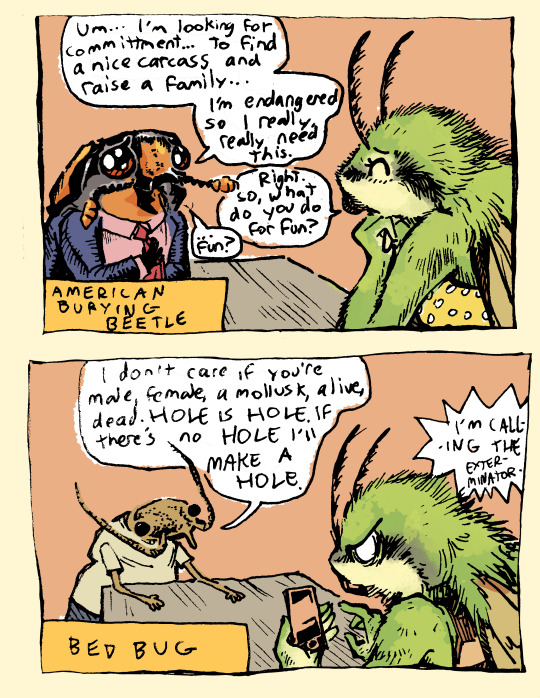
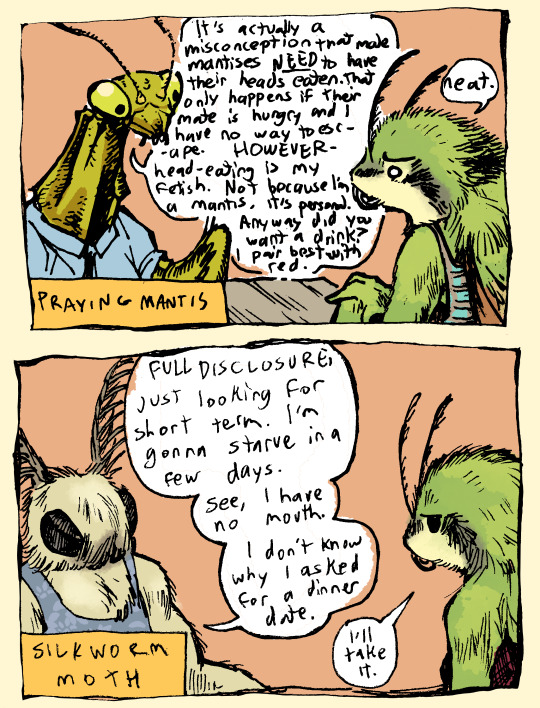
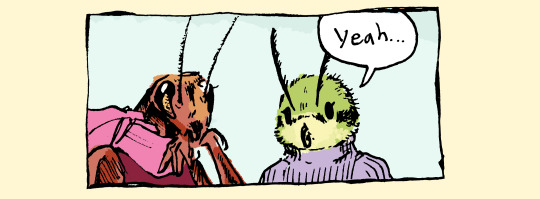
Bumble(bee moth)
#this is an AWFUL transcript but it’s the most i can do at the moment#hopefully it helps a little bit!!#maybe ill come back and do an actual id but i need to go to bed#worf opens their big mouth#feel free to edit this or use the dialouge!#comic#art
15K notes
·
View notes
Text
reading a short story collection that really exemplifies my distaste for how things are described in book summary blurbs. so many buzzwords and slinging around political issues (this isn't necessarily this specific book) that I guess are useful for people going "I want to read a book that tackles [x] problem!" but man I'd rather figure that out myself by reading it. (this specific book now) "a bunch of silkworm girls seize the means of production in revolution" yeah I guess but they did it by realizing that silkworms are no longer useful once they metamorphose into moths, and then using the machines that reel the silk to instead create cocoons. that's infinitely cooler than what I expected from "seize the means of production". and then there's another one about settlers in the American West that says "the monster is the human hunger for acquisition, and the victim is all we hold dear" and okay yknow what I can partially forgive this one because I assumed it would be metaphorical, like, "oh no in my drive for land I didn't realize my family is suffering!" and not a slenderman -esque representation of all stubborn settlers that planted a garden of bones and has a house with no doors and kills people. it was fun to be surprised by the story taking a turn to that from "oh man will this kid reach their neighbor's house in time? will the inspector approve?" but what I'm saying is the blurb did not interest me at all. like yeah man we know colonialism is bad, I'd like to hear if you have a fresh take on it. when they're all saying this bland sort of thing in the blurbs you can't tell which works are going to get funky with it and which are Why This Thing Is Bad: For Babies
#bluejay reading log#the short story collection is vampires in the lemon grove by karen russell btw#me post
1 note
·
View note
Note
Hi! I was wondering if you had any thoughts on the Valar and animal companions? Are there any they feel particularly akin with, etc. Love reading your headcanons!
Oh I love this ask! I'm combining what we know of their domains and any animals associated with them with my own thoughts!
under cut just for length! I’d love to hear anyone else’s thoughts on this! I love thinking about creatures in the context of Silm so feel free to ask more questions about this!!
Manwë: the eagles of course! But I picture him just sort of surrounded by birds in general. Perching on him, fluttering around him, etc.
Varda: This one was harder! I’ve talked about it before but Varda is far less physical than Manwë is, even when she appears vaguely human or elf shaped she’s still composed primarily of vapors and light rather than flesh and bone. I do love art of sea creatures flying among the stars though. Perhaps there are magical rays that fly through her domain. Some of them like eagle rays have night sky like patterns!
Oromë: Hounds and horses obviously! And great, prehistoric elk like creatures. And @aronoiiel and I have a headcanon that he also has a huge black panther that aids him in hunting more dangerous creatures.
Vána: So she does seem to be associated with songbirds but I also like butterflies, it reminds me of what @undercat-overdog said about rebirth and growth/fertility as part of her domain.
Ulmo: So many amazing sea and water creatures! This was so hard! Sea birds definitely, already many of the Valar are bird associated. Also seals. I also really like frogs? I mean rain and streams are also apart of his domain. I like frogs being little messengers for him.
Nienna: Elephants. Large, gentle but destructive too. And they mourn like we do. And the gray colors.
Aulë: I really like him with salamanders. Not just regular ones but mythical ones, ones that live in firewood and can catch fire themselves. They’re always on him, in his forge apron pockets and hair!
Yavanna: I like wildebeests for her. And beetles. I don’t really have reasons for this. I suppose they are just opposite ends of the animal kingdom. Or not literally, there are creatures more apart from large animals but still.
Irmo: Moths. I love associating him with moths. Especially Luna moths.
Estë: Both her and Irmo I associate with nightingales. But I also imagine for some reason manatees living in her lake. Slow, gentle, peaceful to watch.
Vairë: I was thinking perhaps a tailor bird or cave swallow or another bird that is known for making elaborate nests by ‘weaving’ or ‘stitching’. Or maybe silkworms! I guess those aren’t really a companion though.
Námo canonically has a dog in the book of lost tales which is amusing to me! I suppose this is cliched but I do love ravens with him. Not even for the death symbolism, more for the variety of dry, deadpan corvid characters in literature that fits how I see his personality.
Tulkas: I really love the idea of him sharing a love of wild cats with his brother in law. Also look at the art @forestials did here of him with a serval, it’s so beautiful and perfect for him.
Nessa: deer of course! All kinds of deer, not just English or American ordinary ones. though she also joins in with her brother and husband with the wild cats.
Melkor: he keeps elves as pets? but like also dragons. and according to BoLT snakes. large ones. And there are wolves in the fortress though they are more Sauron’s than his.
32 notes
·
View notes
Text
When you think of silk, you're most likely thinking of the kind of silk made by the bombyx mori variety of silkworm, which has been domesticated for over a thousand years. However, there's also a variety of "wild" silkmoths. They can be found in the wild, but they are also bred by humans for their silk. The most notable varieties, and ones you’ll probably see offered when looking for spinning fiber, are tussah, eri, muga and tensan. (You actually almost never see tensan silk for sale, but I’m including it because I love it.)
(Rest under a cut, because this got ridiculously long)
There's even several north american varieties of wild silkworm, most notably the polyphemus moth!

(photo of polyphemus cocoons from wormspit,com)
Each type of silk looks and feels slightly different, because it's made by different species of silkworm. The tussah and tensan varieties are a type of silkworm that eats primarily oak. The tussah variety is the Chinese oak moth (antheraea pernyi), and it has an ecru/beige/light brown cocoon. Whereas the tensan (antheraea yamamai) is the Japanese variety of oak silkmoth. It has a golden green colour cocoon, which unlike the tussah silk, is resistant to dyeing (but also resistant to staining).

Combed tussah silk top (image from Ashford)

Tensan cocoons and yarn (image from Azumino Tensan Silk Museum)
The cocoons of the tensan silkmoth can be more green or more gold, depending on how much direct light they receive while spinning their cocoons. More sunlight makes the cocoons a darker green.
Unlike the bombyx mori variety of silkworm, the tussah and tensan varieties only have one brood per year, unless you give the eggs artifical cold treatment. (ie stick the eggs in the fridge for a few weeks to pretend it's winter.)
The muga silkworm is another of the wild silkworms, from the Assam region of India. It's latin name is antheraea assamensis, and it's also known as the Assam silk moth. It's silk is a glossy gold/bronze/brass colour.

Muga silk top (image from DivinityFibers on etsy)
Eri silk is made from the samia ricini species of silkworm, and it primarily eats castor beans, tapioca leaves or cassava. It's also known as "peace silk" since the cocoons of this variety cannot be reeled, so the moths hatch out and do not have to die to produce their silk. Eri silk can range anywhere from a light gold/beige colour to an orangeish red.

“Red” Eri silk (image from treenway silks)
The bombyx mori or the mulberry silkworm is the most commonly known silkworm. It was domesticated from the bombyx mandarina wild silkworm. It's been domesticated so long that the moths can no longer fly at all, and the caterpillars are nearly helpless.
So now that we've had a rundown on different species of silk, let's get into the different preparations of silk you can find (and how they're processed!)
There's several different stages and preparations of silk you can find to use to make silk yarn. Silk caps or hankies are one of the most "finished" product you can find as a spinner to work from, made from taking the cocoon and stretching it over either a hoop shaped frame or a square one. The difference in shape is how you get the "cap" or "hankie" shape. Most caps and hankies come in a stack, since it's easier to stretch a few cocoons over the frame to stack up the layers.

A stack of silk caps (image from treenway silks)
Silk top (another of the more processed silk preparations) is often made from the extra floss that silkworms make in preparation for spinning their cocoon and holding it in place. (The images of the tussah, muga and eri silk are all silk top for reference.)
You can also find cocoons for sale, and process them yourself. You need to degum the cocoons, as the sericin, which is the glue that holds them together, keeps the silk fibres tightly glued.
Cocoons are made from one continuous strand of silk, so when the cut cocoons are processed, sometimes you get bits of silk that are a few centimetres long and some that are several metres long. When carding cocoons, sometimes you need to go in with a pair of scissors and cut the staple length to a more reasonable size. (Just pull the carders apart to a reasonable distance and snip in between! Reasonable is up to the spinner's discretion.)

A cut cocoon with pupa peeking out, with whole cocoons below it. (image from wikipedia article on Ahimsa silk)
There's also getting silk from the whole cocoons, where the pupa is still inside. This is an entirely different process from spinning the silk, and is called "reeling." Most silk fabrics are made from reeled silk.
Reeling involves taking the single silk thread from the cocoon as one single length. You need to take the fibers from several cocoons at once, as each individual fiber is very fine, and if left as a single fiber, extremely prone to breaking.
There's several methods to reeling silk, but the one I've researched best is the Japanese method, so that's the one I'll be describing. A good chunk of my knowledge is from http://www.wormspit.com/silkreeling.htm and http://www.wormspit.com/newreeling.htm
To reel silk, you take the whole cocoons (you'll want a few dozen of them) which have been stifled (bake them so the moth doesn't hatch) and put them in a pot of near boiling water. This is to help loosen the sericin. Then you take a brush and brush along the cocoons to find the loose end of the silk fiber. You'll want to get around 8-20 cocoons. Transfer them to another water bath which is slightly cooler, but still warm.
The next step is feeding the reeled silk filament through a croissure, which is a pair of pulleys, with the silk looping back on itself. This squeezes some of the water out of the silk and also squishes the individual fibres together better, where they are glued together by the leftover sericin still in the fiber.

(image from wormspit)
The silk is then reeled onto a reel, where you have to be careful to make sure that the layers of silk you're winding onto the reel don't lay directly on top of the last layer. (You'll want to make sort of X shapes instead of /// shapes.) This keeps the silk from glueing itself to the previous layer.
After reeling, you need to re-reel the silk, to help it dry and keep it from sticking to itself. You can then re-re-reel it onto a cardboard tube, or store it in hank form.

(image from wormspit)
To turn the reeled silk into yarn, you then need to "throw" it, which is adding twist to the reeled silk. This is the stage where your spindle/spinning wheel comes into play!
As silk is so fine, most yarns are made from several strands of the reeled silk that was made in the last step.
Once you have made your thrown + reeled single, you can then ply it, or work with it on it's own. If weaving, you might not want to remove the left over sericin, as the sericin gives the fabric a bit more body. However if you intend to knit/crochet/sew with the resulting yarn/thread, you'll want to degum it.
The mulberry silkworm is the most common silk to be reeled, but you can also reel tensan and muga silk cocoons. However, finding cocoons that are whole for sale is nigh impossible, so if you want to try reeling, you'll have to raise the silkworms yourself!
11 notes
·
View notes
Photo
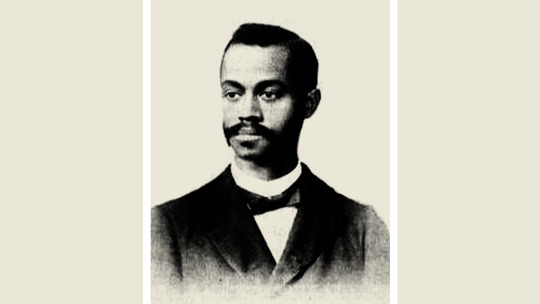
A Black Biologist Pioneered Animal Intelligence Research, but His Work Was Buried
Black biologist Charles Henry Turner was doing groundbreaking research into animal cognition at the turn of the 20th century, yet his ideas never gained traction on account of racism and his seemingly radical viewpoint. Many concepts proposed by Turner are now accepted science, and a group of researchers to say it’s long past time to give credit where it’s due—and to avoid the mistakes of the past.
A new Perspectives essay published in Science describes the contributions of biologist Charles H. Turner (1867-1923), an American zoologist whose “early discoveries are forgotten for all the wrong reasons,” according to the paper’s two authors, Hiruni Samadi Galpayage Dona and Lars Chittka, both biologists at Queen Mary University of London.
Turner’s work went against the prevailing scientific discourse of the time, as he explored and entertained the idea that many animal species were capable of complex behaviors involving intelligence, problem solving, and even conscious awareness. Today, we take many of these ideas for granted, but Turner’s research into these matters never got the recognition it deserved.
“It is deplorable that the now-popular field of ‘animal personality’ has taken so little notice of Turner’s trailblazing approach,” they write.
For Turner’s contemporaries, it was a combination of racism and skepticism of his seemingly outlandish theories. His “visionary ideas about animal intelligence did not resonate in the field,” the authors write, “perhaps they were simply too far ahead of the time,” adding that they’re “almost completely unrecognized in the current literature.”
A deeper dive into Turner’s work reveals some truly groundbreaking insights and approaches. Born in Cincinnati in 1867—just two years after the end of the U.S. Civil War—Turner, who earned his Ph.D. in 1907 while at the University of Chicago, devised some innovative experimental approaches to studying animal behavior and cognition. In the decades prior, biologists Charles Darwin and George Wallace discussed animal intelligence, but their work was based predominantly on field observations and inference. Turner, in addition to observing animals in the wild, devised controlled experiments with animals not unlike those commonly done today.
From 1891 to 1917, Turner published over 70 papers (!), including three that appeared in the journal Science. He studied the learning curves of ants, did a comparative anatomy of bird brains (finding similarities with the brains of reptiles), studied honeybee vision, showed that insects (namely silkworm moths) can hear, studied the hunting habits of sand wasps, did maze experiments with cockroaches (in which he claimed the bugs acted with “will”), and documented detouring behavior in wild snakes (he once saw a snake catch a lizard by climbing up a neighboring tree so that it could pounce on its prey from above). He also studied individual variation and intelligence in spiders, as the authors explain:
Contrary to the still-popular view that spider web construction is a prime example of invertebrates’ robotic, repetitive action patterns, Turner reported variation between individuals in adapting their construction to the geometry of available space and the functionality in capturing prey: “we may safely conclude that an instinctive impulse prompts gallery spiders to weave gallery webs, but the details of the construction are the products of intelligent action.”
Turner’s observations and experiments led him to propose theories about the intentional behaviors of animal, arguing that they are intelligent, conscious beings. Some of these ideas wouldn’t be re-explored for another century, including the suggestion of free will among insects—an idea not revisited until only recently. Indeed, his were highly unconventional ideas; it wasn’t until 2012, for example, that a consortium of scientists signed the Cambridge Declaration on Consciousness, in which they admitted that all animals have conscious awareness to some degree.
In Turner’s era, the traditional approach saw animals as creatures driven almost exclusively by instinct and held that any apparent intelligence could be explained by sheer persistence, among other processes, as the authors describe:
Early ethologists such as Oskar Heinroth, Charles Whitman, and Wallace Craig focused instead on innate behavior and imprinting, a simple form of learning. Where problem-solving was observed, such as when animals open puzzle boxes, behaviorists such as Edward Thorndike proposed that this materialized as a result of trial and error, not insight or understanding of the nature of the challenge. None of these scientists were interested in individual variation of behavior.
Turner, in addition to not receiving the recognition or respect of his peers, was denied a position at the University of Chicago. This snubbing was due to racism, the authors contend (Turner became a high school teacher after earning his Ph.D.) This limited his access to resources that could’ve pushed his research to the next level, such as lab equipment, texts, and research assistants; the lack of the latter prevented his ideas from trickling down to the next generation of biologists. As the authors point out by comparison, Russian scientist Ivan Pavlov (1849-1936), famous for his salivating dogs, trained more than 140 colleagues.
The authors “cannot help but wonder what Turner might have achieved if he had had comparable resources and manpower” as the “entire field of animal cognition may have developed differently.” To which they added: “One would hope that nowadays, a person of Turner’s caliber might not face similar adversity in terms of academic employment opportunities or long-term recognition of their contribution to science” but even today “very few scholars in animal cognition, or indeed across biology, are Black.”
Turned died at the age of 56 from a heart condition, but not before he made contributions to the U.S. civil rights movement, fighting for social and educational services among Black people living in St. Louis, Missouri, where he made his home.
Turner’s story is as intriguing as it is frustrating, a sad reminder of the immense contributions made by people who, over the course of history, have had to endure hardships imposed by systematic discrimination [racism].
#charles henry turner#amerikkka#racism#black scientists#black biologists#gizmodo#animal cognition#comparative anatomy#education
1 note
·
View note
Text
Lupine Publishers | Silk Threading-A New Revolutionary Jewellery from India

Lupine Publishers | Journal of Textile Science and Technology
Short Communication
Jewellery is a mesmerizing term which any feminine gender would love to admire and afford. Instantly, this magic term recalls about ornaments made up of gold, silver, platinum etc., in our minds. But the 21st century scenario is very different where the word jewellery has a different connotation. In the recent years, may be women would have felt jaded of using the above mentioned ornaments which led to a change in artificial jewellery. Popularly termed as funky, imitation, bling, modern or fashion etc., are the new terms and the current trends go on. Though, such discernments are stated to revelation on the social status, invariably such artificial jewellery is worn right from the poor to the rich. No doubt that so called artificial jewellery has made a mini industrial revolution among the metropolitan women who are supposed to admire such antiques wearables from head-to-toe [1,2].
Artificial Jewellery
Indian Jewellery is legendary all over the world as they are royal inspired by the old Indian tradition and is considered to be one of the oldest ways to flaunt women's beauty. Today in India where real Jewellery has become extremely expensive and trend setting is moving towards imitation Jewellery. These are only look alike real Jewellery but are much economical and affordable to common Indian women. Conversely with artificial Jewellery, it is more convenient to innovate multiple and numerous designs and ideas than the regular Jewellery designs. Also, it is not an unacceptable fact that these do not have good appreciable deterioration unlike the other ones.
Silk-Threading
Commercial silks originate from reared silkworm pupae that square measure bred to provide a white coloured silk thread with no mineral on the surface. The pupae square measure killed by either dipping them in boiling water before the adult moths emerge or by piercing them with a needle. These factors all contribute to the flexibility of the entire cocoon to be unravelled joined continuous thread, allowing a far stronger artefact to be plain-woven from the silk. Wild silks additionally tend to be tougher to die than silk from the cultivated silkworm. A way called demineralising permits the mineral layer round the cocoon to be removed, deed solely variability in colour as a barrier from making an ad silk trade supported wild silks in components of the planet wherever wild silk moths thrive, like continent and South America. The entire production method of silk is divided into many steps that square measure generally handled by totally different entities (Figure 2).
Silk-Threaded Jewellery
The typical groundwork on the silk threading artificial Jewellery starts from simply covering an acrylic or plastic ornamental material with such threads. The artistic skill set starts here at the precision and accuracy of the cover over such ornaments. Innovation and designs goes unlimited by use of various colours and mixing it with warp ribbing, crossing over, stretching, bending, overlapping, etc. Further, creativity adds up with attachment of artificial stones over it which may add blink to the jewel. Beads which are made of glass, gemstones, metal, wood, shells, clay and polymer clay etc., are most commonly used in encompassing necklaces, bracelets, earrings, belts and rings. The use of seed beads is an embroidery technique where seed beads are sewn onto fabric backings to create broad collar neck pieces and beaded bracelets. Bead embroidery, a popular type of handwork during the Victorian era, is enjoying a renaissance in modern Jewellery making. Beading, or beadwork, is also very popular in many African and indigenous North American cultures.
Designs
A tentative design with patterns are listed as below for the readers reference.
a) Goddess-Lakshmi
Neckpiece with Pink & Green Silk Thread beads embellished with spacers & antique connecter & Beautiful Antique Lakshmi Pendent. Green Silk threads Jumukas & pink Silk Thread beads Embellished with golden ball chain paired up with beautiful antique Lakshmi studs. Nakshatra Bangles as side bangles with green & pink mix Bangles makes the set grand & elegant (Figure 1).
Figure 1: Goddess-Lakshmi.
b) Lorials Set
Beautiful Neckpiece is made of pink silk thread beads with Lorials pearl with Medium Pink Jumukas embellished with pearl chains & golden chains paired up with antique dancing small peacock studs. A set of elegant bangles with double design pattern worked with pearl & stone. Matching Tic Tac hair clips embellished with pearl & stone work (Figure 2).
Figure 2: Lorials Set.
c) Peacock Set
Large peacock blue Jhumkas embellished with golden beads packed up with peacock studs. Neck piece with silk thread beads and antique peacock pendant matching the stud which is embellished with golden kundans. A set of simple elegant bangles with crisscross design stoned in on the outer layer (Figure 3).
Figure 3: Peacock Set.
Developments
The targeted market is obviously on typical Indian ladies and hence, metropolitan hunt is continual across online and social media. Numerous FB and twitter follow-ups are common happenings on the internet users. Online Jewellery entrepreneur's viz., caratlane, bluestone etc., are troubled that needless to mention on the typical Indian hesitation on investing for purchasing it without having a visual of it. However, as economical and affordable artificial Jewellery to a common Indian girl, this silk threading is no doubt an emerging revolution feasible by any innovators and creative human beings.
Acknowledgement
The author is one such innovator in home-made silk threaded Jewellery famed in the social media. Readers are advised to check the references for further reading.
For more Lupine Publishers Open Access Journals Please visit our website: http://lupinepublishers.us/ For more Textile Research Journal articles Please Click Here: https://lupinepublishers.com/fashion-technology-textile-engineering/
To Know More About Open Access Publishers Please Click on Lupine Publishers
#Lupine Publishers#Lupine Publishers Group#Lupine Publishers Textile Journal#Open Access Publishers#Open Access Journals
63 notes
·
View notes
Photo









Shag carpet caterpillar moth, Prothysana felderi, Apatelodinae (American silkworm moths)
Found from southern Mexico down through South America
Photos 1-2 by Frank Deschandol // Instagram - Shared with permission; do not remove credit or re-post!
Photos 3-4 by Andreas Kay, 5-6 by indianacristo, 7 by kkrockytop, 8 by entomophilo, and 9 for scale by rossycastaneda1
#animals#curators on tumblr#insects#bugs#moth#caterpillar#larva#shag carpet caterpillar moth#american silkworm moth#one nice bug
446 notes
·
View notes
Note
hiya! Sorry if you're the wrong person to ask haha, but I was wondering if u knew anything about those butterfly kits and whether they're ethical or not? I would love to raise and release some butterflies but I don't know where the caterpillars come from or whether the environments of the small tubs and net shelters are actually healthy and happy living environments for the caterpillars/butterflies, sorry if u don't know anything, but thanks 4 reading anyway!! 🐛🦋
I’m not very familiar with this topic so take what I’m saying with a grain of salt, but I’ve heard the releasing of farmed butterflies can be harmful for the environment/local butterfly populations.. Ethically I don’t think theres anything wrong with the enclosures those kits come with, the only problem I have with them is the effects they have on wild butterflies (and that I think theyre kinda overpriced) Heres a link to the north american butterfly association’s views on this.
Instead of kits id recommend either finding local moths/butterflies in your area to raise and release, or keeping captive moths like silkworms (Bombyx mori) or saturniids. They're less active and easier to care for/require less space than butterflies . Silkmoths can be reared on artificial food just like the butterfly kits and come in cool varieties!
48 notes
·
View notes
Photo

Bug of the Day
This funky-looking moth, the Spotted Apatelodes (Apatelodes torrefacta), is in the American silkworm moth family. You cannot really tell from this photo, but those “white” patches on the apex of each forewing are actually see-through. Very cool.
Happy National Moth Week!
#spotted Apatelodes#Apatelodes torrefacta#Apatelodes#Apatelodidae#Lepidoptera#insect#moth#National Moth Week
142 notes
·
View notes
Photo

“American Silkworm moth or Polyphemus moth.” Friends and foes in field and forest. 1913.
354 notes
·
View notes
Photo

McCloud River Falls
This is McCloud River Falls up near Mount Shasta, because my map is looking a bit thin around Redding. I wondered about the name, and YES it was originally McLeod, which they changed because even people in 1860 couldn’t spell, apparently. Alexander Roderick McLeod, of Clan McLeod in the Isle of Skye, motto ‘Hold Fast’, was a fur trapper who worked for the Hudson Bay Company in the early 1800s. Hudson Bay Company is not to be confused with my bros in the Hudson River School of Art. The whole idea behind a lot of American frontier expansion by the mountain men was that hats were super fashionable in London particularly, but all throughout Europe too, with the undercoat of a beaver being a great feltable water resistant fiber to use in making all those top hats and bowlers that you see in old paintings. It’s a great fur fiber, to be sure, if you’ve ever felt a beaver hat, they’re quality. Hats had become such a huge fashion item though that literally millions of beavers were trapped to export to England. America had an enormous supply of beavers, and if you’ve ever had to deal with farming or settling land around these rodents, they weren’t making any friends shall we say. Beavers can fell enough trees to flood your house in about a day, they make a big mess and flood stuff out. Even today they’re considered pests, and despite the estimated 200,000 beavers who were trapped each year at the height of the fur trade, there’s still a hefty thriving population that is certainly not endangered, despite everyone’s best efforts to hunt them to extinction. By the late 1800’s the beaver population was getting low and the hat demand was still quite high, so the fashions changed to silk with the advances in silk production and the invention and increasing popularization of the world’s first computer, the punch-card operated Jacquard Loom Also, thanks to Louis Pasteur, they’d just gotten rid of a silkworm disease that had devastated the silk industry during the height of the beaver felt hat fashions. It all worked out. Moths and Rats. The height of fashion.
And the drama about cloth weaves and who handles fiber better goes on…
5 notes
·
View notes
Text
Ahhh….time for a blog post. Seems I’ve been blogging in my head for a few months now. But now for real, here. Let’s see how this goes…
As always, gardening is keeping me sane here- a good time for gardening and sanity with elections (finally behind us here until November) and more of the same old BS of copyright issues, Amazon(this time), and Chinese sellers. If you follow me on FB you may have seen some of these pics but I add them here once more.
This slideshow requires JavaScript.
I think I will call it the Sanity Garden!
Regarding Amazon, I had to spend a bit of time playing Whack-A Mole there by issuing complaints to Amazon regarding a network of Chinese sellers slapping my images on over 40 crap products. Some have been taken down, some strangely remain (how Amazon decides these things is beyond me) and new ones have popped up under new names with slightly reworded descriptions. They all seem to contain the wording “Printed Watermarked Shibori Ribbon” which is hilarious seeing that they stole the watermarked image of mine online and used the metadata info to describe. Yes, folks they are that kind of stupid. Kind folks have added their 2¢ in some of the product reviews. One of the items was a doormat (since removed) which seemed demoralizing in a funny way and another was a brandy flask which I could certainly make of use! Moving on…
The last Indigo and Shibori workshop at the JAMN was wonderful and filled with good, creative and enthusiastic folks. The next Shibori On! workshop at the Japanese American National Museum is August 4-5. It has only 3 spots left so if interested please check in there soon! They do keep a waiting list so, if full, ask to have your name added. Some pics from the last workshop:
Next up at the JANM though is Moth to Cloth Silk Workshop (sign up through the link)–there are still spots open. I have some great video and photos of silk production in Japan as well as a collection of tools and implements to explore and use. We will reel silk cocoons purchased from my friend and sericulturist in Japan, Nobue Higashi san as well as make silk hankies for spinning and dyeing (both of which we will do in the class). Cut flowers made from cocoons will also be made. But the real star of the workshop will be the live silkworms that just hatched two days ago and for those interested and willing, you can take some home to watch them spin and emerge from their cocoons. Here is what they are looking like as of yesterday. At this stage we call them kego and they remind us of hairy ants. I have already found my mulberry sources in the neighborhood and am ready to feed the “tiny masters” as Micheal Cook of Wormspit affectionately calls them.
Moving right along, work slowed up a bit the past couple of months which let me somehow to doing a quick turn-around for a bridal designer in LA whose customer wanted her wedding dress indigo ombre dyed for her one year anniversary. Apparently, the other dyers she had previously used were not available and my name came up. these sort of things are not undertaken lightly as you only have one chance to do it and it must be done right. The dress was all silk and the skirting was 3 layers of different silks. Here is the result:
In addition, I am filling in with my indigo and shibori teachings at a garment felting workshop by Beth Marx in October that will also include some eco-printing (hers, not mine). Apparently there was an issue with the original teacher coming from the EU and I agreed to fill in with the acceptance of the already signed up students (they all agreed!) Class is full with a waiting list. Interesting to me was that Beth also lives in Long Beach and we don’t know each other. I’m such a loner in that regard. It sounds interesting.
I added some new shibori ribbon colors to the shop- my favorite is the colorway called CopperPlate. I had beaders who like rich colored metals in their beadwork in mind when I made it. I also added some shibori pieces I call “A Little Fancy”. Check it out!

Let’s not make it so long between visits next time shall we?
from there to here and somewhere Ahhh....time for a blog post. Seems I've been blogging in my head for a few months now.
#copyright violation#indigo#Japanese American National Museum#long beach#shiborigirl#silk shibori ribbon#silkworms#wondering#workshop
1 note
·
View note